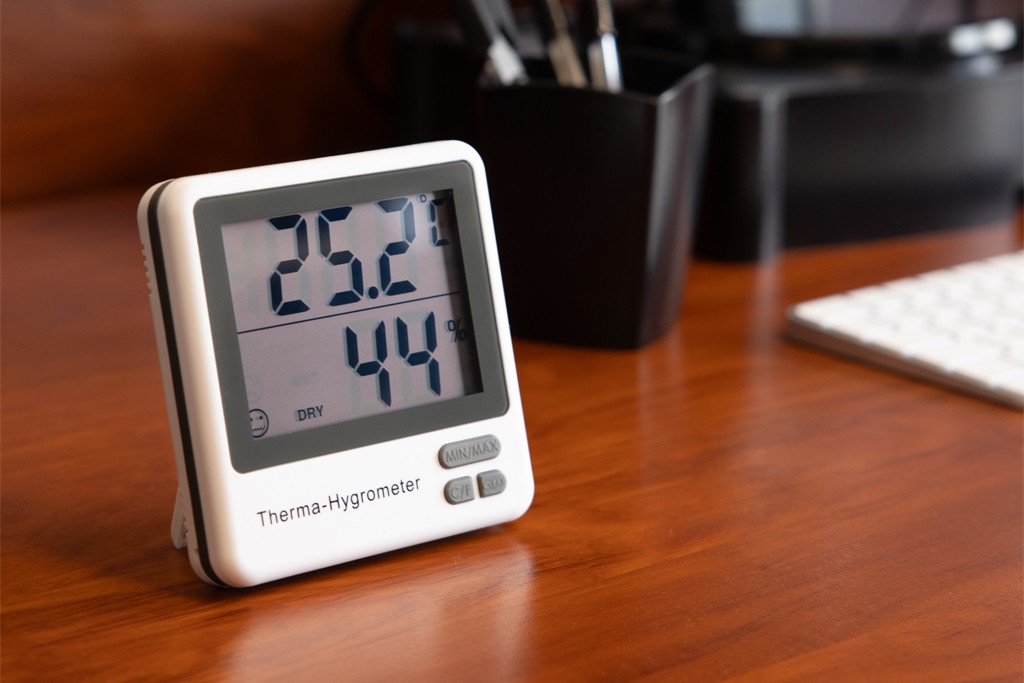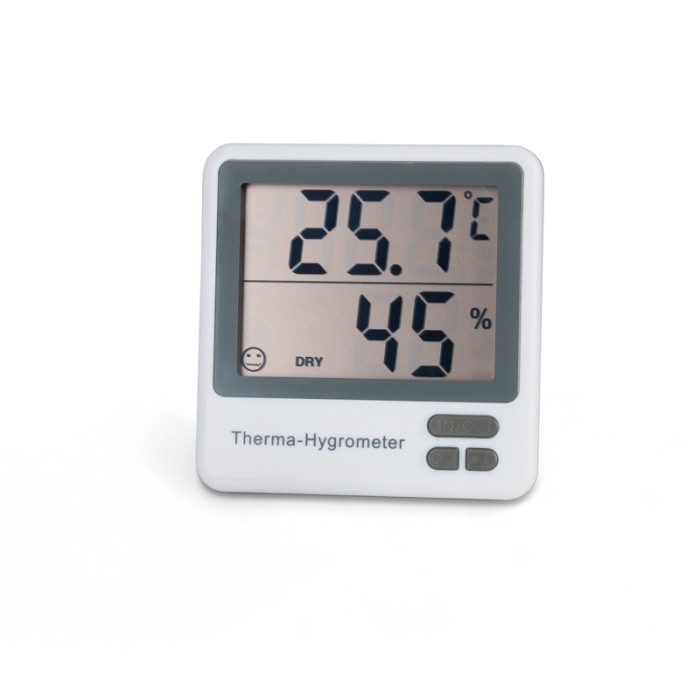What Humidity Should a Room Be?

Making sure your room humidity is at the correct level is important for health, comfort, and looking after your home.
Read on to learn what the humidity in a room should be, how to measure it, and how to raise or lower it.
What Humidity Should a Room Be?
The humidity in a room should be between 30 and 60%.
In summer, aim for 40-60%. In winter, aim for 30-50%.
The higher the humidity, the more moisture there is in the air. Aiming for a lower humidity in winter will prevent condensation, which can lead to mould.
Why Maintain Ideal Humidity?
Health
Optimal humidity reduces the risk of breathing issues, allergies, and skin irritation. Low humidity can cause a dry nose and throat. High humidity can make asthma symptoms worse.
Home
Prevents damage to wooden floors, furniture, and plaster. Mould thrives in high humidity.
Comfort
High humidity can make the air thick and muggy. Low humidity can feel dry and stuffy.

High Humidity
What is High for Humidity?
Over 60% humidity is high for a house or room. When there is a large amount of moisture present in the air, it is released as water vapour. This can lead to condensation, damp and mould.
Signs of High Humidity
If you you have high humidity in your home, you may notice a musty smell, condensation on windows, or dampness. It can also cause an increase in allergy symptoms.
What Creates Humidity Indoors?
- Drying washing indoors
- Keeping windows and vents closed
- Low room temperatures
- Lack of insulation
- Cooking
- Showering
How to Reduce Humidity in a House?
Maintain a Regular Room Temperature
Around 20 °C is ideal. Warmer air = less moisture.
Ventilate
Allow moisture to escape by keeping windows cracked open, especially in the bathroom. Use extractor fans and vents.
Use a Dehumidifier
Dehumidifiers draw moisture from the air. Great for small spaces or windowless rooms where ventilation is more difficult.
Avoid Drying Washing Indoors
On average, one load of washing releases two litres of water into the air. Where possible, dry clothes outside or use a tumble dryer.

Low Humidity
Signs of Low Humidity
Low humidity can be detected by dry skin, itchy eyes and sore throat. You might also notice an increase in static electricity.
How to Increase Humidity
Use a Humidifier
The most effective option, especially in winter.
Add Houseplants
They naturally release moisture into the air.
Place Bowls of Water Near Heat Sources
As the water evaporates, it boosts humidity.
Dry Clothes Indoors
Hang laundry on a rack rather than using the tumble dryer.
Boil Water or Cook on the Hob
Steam from cooking helps raise moisture levels.
Leave the Bathroom Door Open After a Shower
Let the steam spread through the house.
How to Measure Humidity in a Room
A hygrometer, also known as a humidity meter, measures the humidity in a room.
Simply place it on the side, and you’ll be able to check your room temperature and humidity at any time.
We recommend this Digital Therma-Hygrometer for keeping your humidity levels on track. The on-screen icon indicates whether the humidity levels are low, comfortable or high, so you can see whether you should make adjustments.

Summary
The ideal humidity levels in a room should be between 30 and 60%. This range is comfortable and prevents condensation, damp and mould.
To prevent high humidity levels indoors, open windows, vents and use extractor fans for ventilation. Maintain a room temperature of around 20 °C. Avoid drying washing indoors.
Placing a digital hygrometer in your room will enable you to check on the temperature and humidity at any time, keeping conditions comfortable and on track.
You Might Also Like:
What is the Ideal Room Temperature?
What is the Optimal Office Temperature?